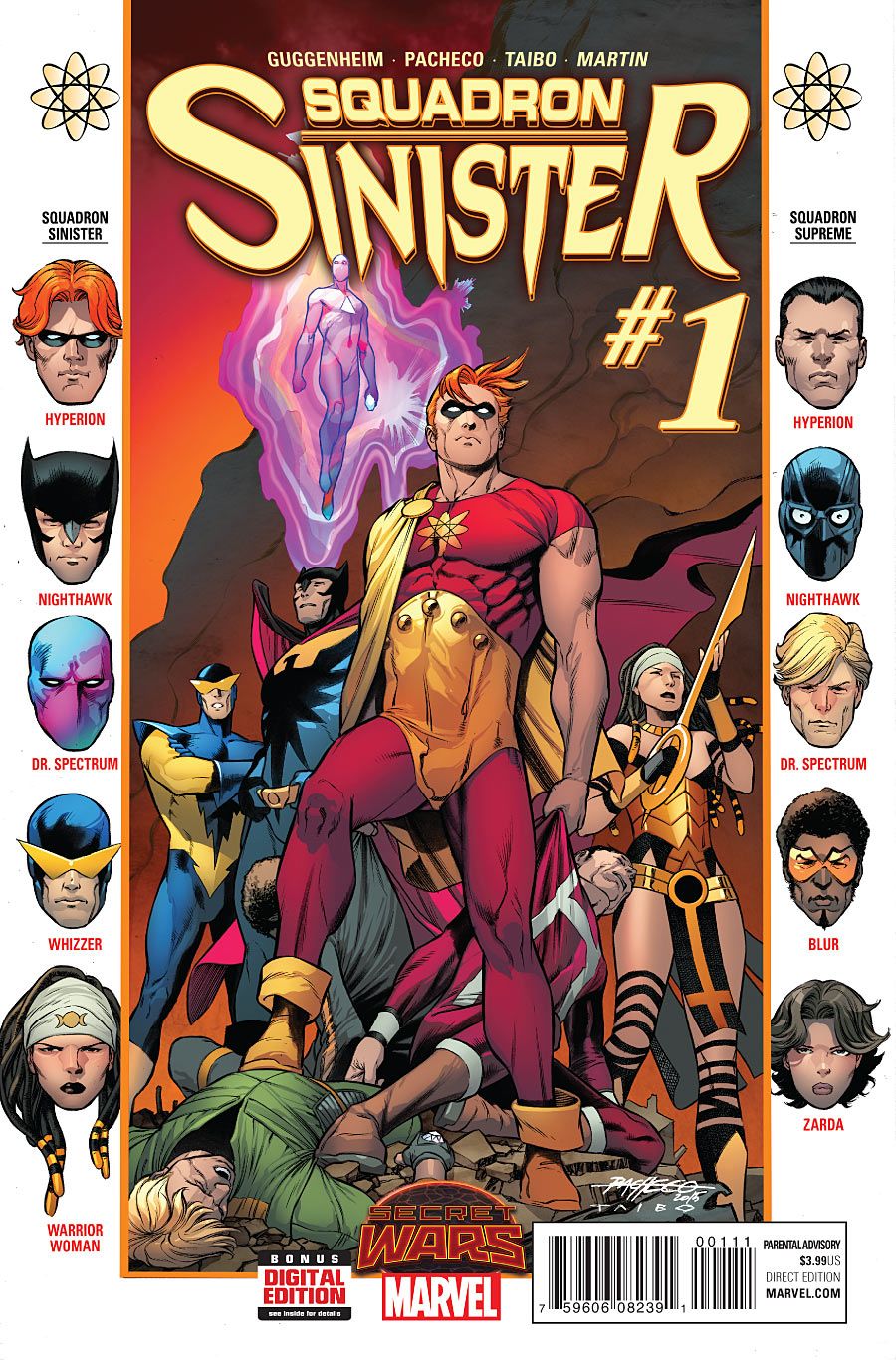Carlos Pacheco and Mariano Taibo's cover to "Squadron Sinister" #1 boldly displays the team of the same name standing victorious over their vanquished foes, an alternate version of a similar team known as the Squadron Supreme, with the vignettes of both sides shown vertically on either side. It's not just any version of the villainous group, though; observant readers will recognize this incarnation as the one created by J. Michael Straczynski and Gary Frank over a decade ago. Marc Guggenheim opens up the issue with the very same battle promised on the cover, although the outcome is a little bit different. There's also far more to Guggenheim's story than a Squadron vs. Squadron showdown and, while it might seem a little disappointing that this showdown is over so quickly, there are plenty more surprises and a far deeper plot than a single cover image can convey.
Guggenheim reaches deep into the dark and forgotten corners of Marvel Comics' publishing history; some of these properties might not have completely escaped readers' memories, but they are certainly not among the classics. In fact, some might escape detection altogether, even with some of the visual clues provided by Pacheco. However, like old high school acquaintances, it's still good to see these familiar faces again after all these decades, and Guggenheim takes these characters and gives them a welcoming nature, both by virtue of their unexpected presence and a valid -- if minimal -- reason for them to appear here. The free-for-all nature of Marvel's "Secret Wars" has given creators a justifiable reason to thaw out old franchises, and Guggenheim takes full advantage of that opportunity.
Pacheco provides plenty of other more recognizable Easter eggs throughout; the Squadron's real-life origins are rooted in Marvel's shot at creating their own version of the Justice League and, with that connection in mind, there are some very familiar looking props lying around the Squadron's citadel. Pacheco makes the Squadron come across as plenty villainous while in action but also makes them appear decidedly human under their masks. Their remarkably clean-cut look harkens back to the era of their original creation, a look that's appropriately and cleanly inked by Taibo.
None of the creators forget that this story is part of a larger one and, to that end, there's a guest appearance of sorts from one of the other "Secret Wars" tie-in titles, a composite of a couple of Avengers characters who is especially imposing and carries more of a modern day sinister look. A later scene with said villain gives Pacheco and Taibo an opportunity to provide an eye-catching tribute to Bronze Age artist Gil Kane, with one of his uniquely dynamic and iconic poses. The scene is prefaced with Hyperion and Warrior Woman engaging in some comical and destructive super-foreplay.
Guggenheim delivers even more than supervillain battles and super-sex, though, not that there's anything wrong with those. There's palpable tension between team members, as many have their own secret agendas that deepen the story, making it even more engaging than the fooling around and fisticuffs. The various character-driven plot threads give the issue the kind of depth not normally seen in these kinds of event spinoffs, and the strong characterization makes a case for Guggenheim, Pacheco and Taibo's "Squadron Sinister" to stick around even after "Secret Wars" finishes up.

